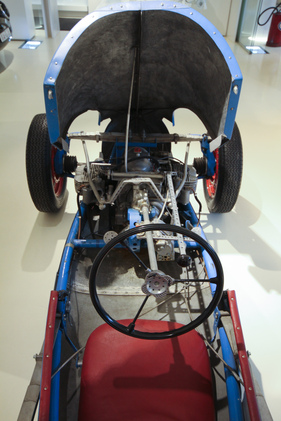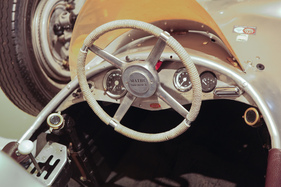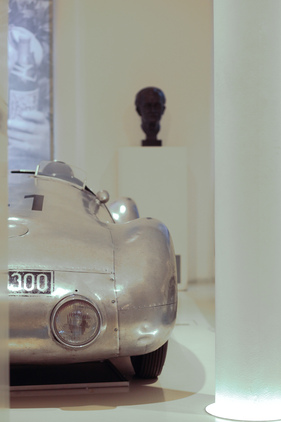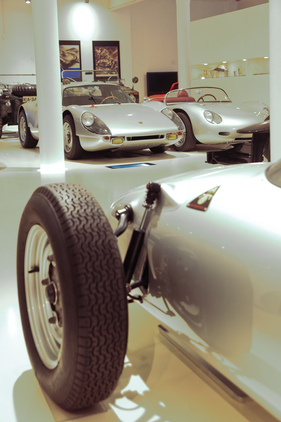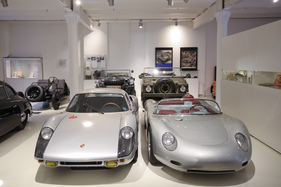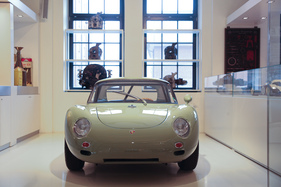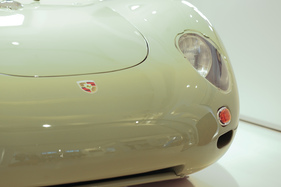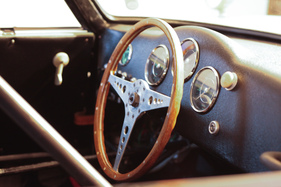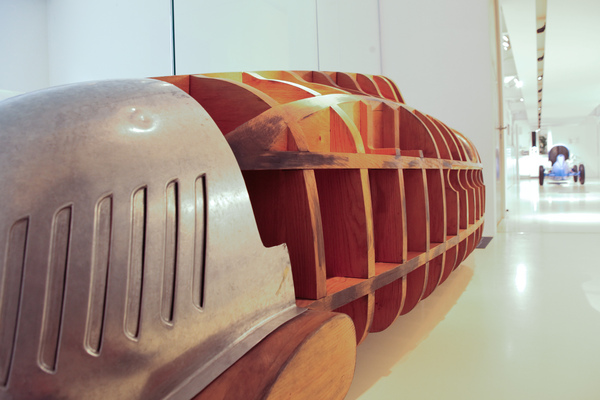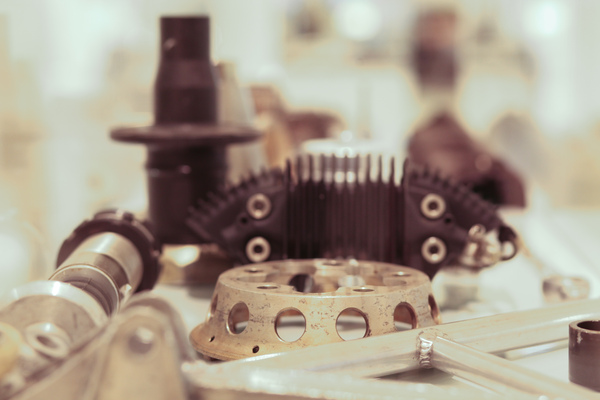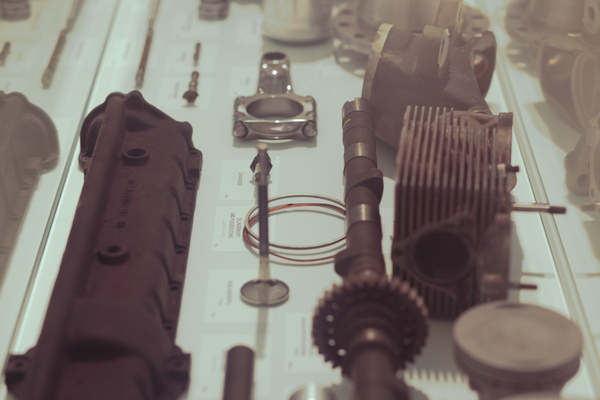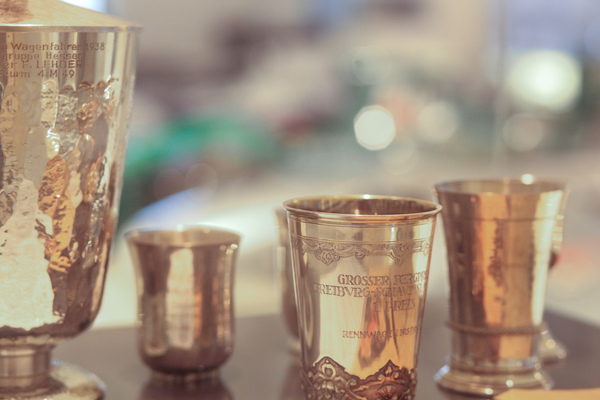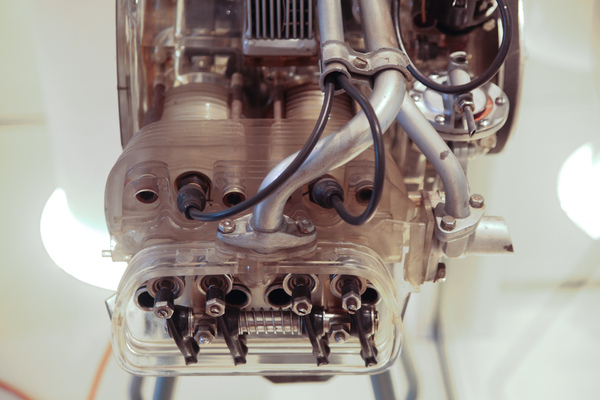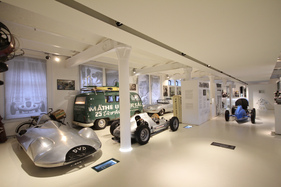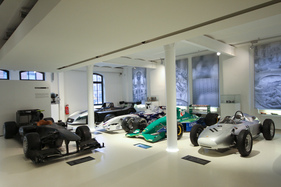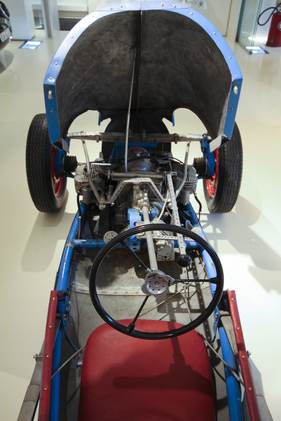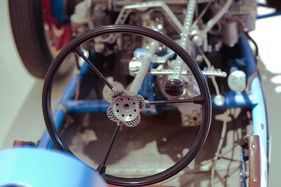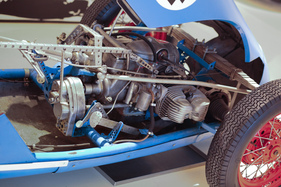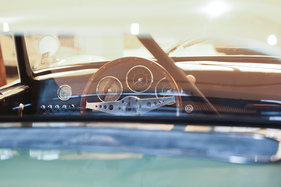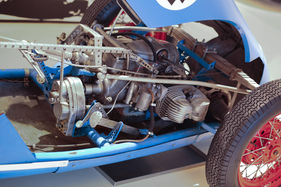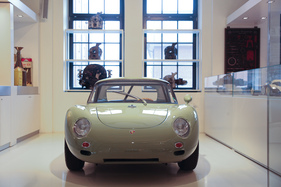The Prototyp Automuseum in Hamburg describes itself as "People. Power. Cars." The aim here is not to be a dusty museum, but to bring history to life.

Lots of enthusiasm
You can immediately sense the enthusiasm and passion of the museum makers and the founders behind it, Oliver Schmidt and Thomas König. The museum was opened in 2008 in a historic factory building in Hamburg's harbor district.

And since then, 50,000 people have visited the clearly laid out exhibition every year.
People.
As you walk through the various exhibition rooms, it quickly becomes clear that this is not just about cars, but above all about the people behind them. Car designers, racing drivers, graphic designers and technicians can be seen at every turn.

Countless display cases are lovingly filled with memorabilia, correspondence and photos to give you an understanding of the life and work of perhaps little-known, but all the more interesting personalities.
Power.
The history of the automobile is full of challenges, successes and tragedies. They are told in the museum, made tangible in photos and in the form of the vehicles. The wooden model alone, on which the bodies of the Auto Union racing cars were beaten in the 1930s, gives you a sense of how much power was involved in building cars in the past. There were neither pressing tools nor robots, the strength of the bodyworker was required.
The museum is also brimming with power in other ways, making history tangible and comprehensible. Exhibits from the past can be found in every nook and cranny, turning every visitor into an explorer.
Cars.
Of course, cars take center stage, even in the Prototyp Museum. But there are far fewer of them than in other museums, and they are particularly select. The aim here is not to tell the entire history of the automobile, but to highlight particular eras and stories.

It is not just prototypes, i.e. one-offs or racing cars, that are on display, but above all special racing cars from the post-war period. The fact that the Porsche brand is particularly present is certainly due to the Schmidt and König collection, which provides the basis for the museum.
Of course, it is the unique pieces in particular that first catch the eye of the connoisseur. For example, the Borgward Hansa 1500 sports coupé, the Berlin-Rome car, which formed the basis for the Porsche 356, or the Jordan 191, in which Michael Schumacher drove his first Formula 1 Grand Prix and only covered 500 meters.
Less spectacular but no less interesting are the various record-breaking and small racing cars, which provide an insight into the world of the post-war years and show the primitive means with which racing was practiced back then.
And you can get up close to the exhibits, as there are no fences or motion detectors to prevent you from taking a close look at a Porsche Formula 1 racing car from the 1960s or Petermax Müller's record-breaking car.
More than just cars at rest
However, you can not only look at the cars, but also enjoy them acoustically. An audio box has been specially set up for this purpose, in which the sounds of various racing cars from the 16-cylinder BRM to the Porsche 904 can be heard. Short film sequences of many of the exhibits invite visitors to see the cars in action. And in the glass workshop, you can watch the mechanic at work. A great deal of effort has been made to present the history of cars in a multimedia format, and the museum in Hamburg is a prototype for the entire genre in this respect too.
On three levels
The privately organized and independently run museum is arranged on several levels, which on the one hand house the permanent exhibition, from which the photos in this report originate, and on the other hand provide space for the special exhibitions presented once or twice a year. There are also rooms for events and an in-house café.

If you're in a hurry, you can rush through the rooms in just under 60 minutes, but people have often been seen bustling through the exhibition from early in the morning until late at night so as not to miss anything. And a good amount of time is certainly necessary if you don't want to miss out on the beautiful board games and games of skill from the automotive world, for example, or take a closer look at engine models and technical parts.
Guided tour recommended
The exhibits and memorabilia are competently and extensively labeled. It is therefore perfectly possible to visit the museum on your own. However, you will benefit even more if you can enjoy the pleasure of a guided tour. There are so many facets to illuminate, so many details to explain, that historian Simon Braker, for example, is always able to tell the stories of the vehicles and people in new ways, which is great fun not only for the visitor but also for him.
Exceptional special exhibitions
The prototype people are of course particularly proud of their special exhibitions, which always bring together exciting vehicles and faces. The 2015/2016 winter special exhibition, for example, is dedicated to the Porsche 356 and features an impressive selection of early 356 models that have perhaps never been seen together in such a small space before.

Further information, opening times and admission prices (adults: Euro 10, children Euro 4.50) can be found on the museum's website.






